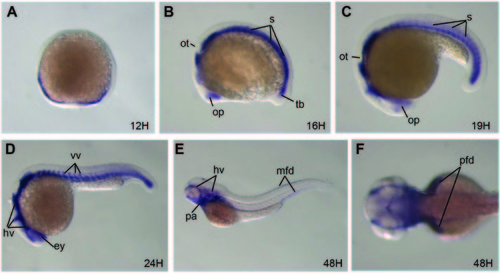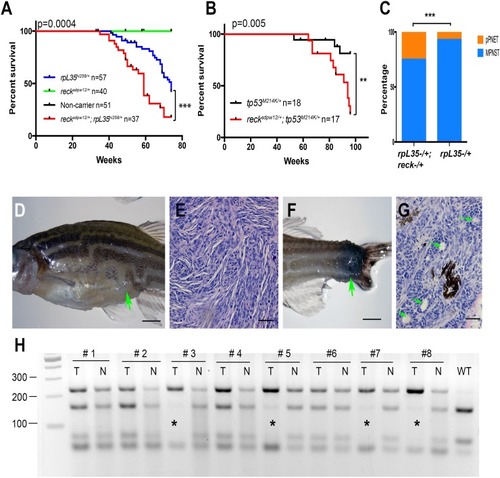- Title
-
Identification of RECK as an evolutionarily conserved tumor suppressor gene for zebrafish malignant peripheral nerve sheath tumors.
- Authors
- Kumari, R., Silic, M.R., Jones-Hall, Y.L., Nin-Velez, A., Yang, J.Y., Mittal, S.K., Zhang, G.
- Source
- Full text @ Oncotarget
|
The reck gene is expressed in neural crest derived and other tissue types during zebrafish embryogenesis. (A) reck is expressed in the head and tail region of the embryos at Stage 12 H (12 hours post fertilization). (B) At stage 16H, reck is expressed in the optic vesicle, head mesenchymal cells, and somite mesoderm. (C) At stage 19 H, the reck gene is expressed in a similar pattern with 16 H, but it is more evident in the ventral somites. (D) The reck expression is most evident in the head vasculature, eye, and ventral vascular primordia at the 24 H stage. (E) At stage 48 H, the reck gene is mainly expressed in the head vascular vessels, pharyngeal arches, and fin folds. (F) Higher magnification of the head region at stage 48 H (E). The reck expression is most evident in the head vasculature and pectoral fin fold. ey, eye; hv, head vesicles; mfd, middle fin fold; op, optic vesicle; ot, otic vesicle; pa, pharyngeal arches; pfd, pectoral fin fold; s, somite; tb, tail bud; vv, ventral vesicles. |
|
( |


